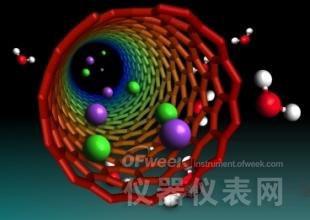Polymerase chain reaction (PCR) is a simple and ubiquitous method of molecularly amplifying DNA fragments. This technology is very important, not only for basic research, but also for diagnostics, forensics and medical applications. Quantitative real-time PCR is a modified version that cumulatively measures DNA amplification by incorporating fluorescent labels, rather than at the end of the process, as in conventional PCR. Therefore, real-time PCR is sensitive to the amount of the initial DNA template and is quantified. However, current techniques introduce bias due to sequence errors, inaccurate binding, or unequal binding of fluorescent probes (hybridization).
A Nagoya University research team has developed a novel method for measuring real-time DNA amplification that is unlabeled, thereby avoiding errors associated with other operations. The research and its results were published in the Science Report.
Existing label-free detection systems rely on surface immobilization of target molecules, which is expensive, laborious, and inefficient. This new approach also introduces elements of hybridization bias that complement the probe binding. The new technique detects changes in the intensity of a laser beam that passes through a tiny 200 nm (0.0002 mm)-wide filled nanochannel liquid with analytical samples. The 532 nm laser beam is focused by a lens and then diffracted by a photodiode through the nanochannel. The silica substrate is used to make nanochannels, the difference between the refractive index of the larger sample liquid and silica, and the smaller the change in the intensity of the diffracted light, and vice versa.

"We used this technology to perform the first unlabeled detection of human papillomavirus and tuberculosis bacteria," said lead author Long Fu Anjing. "This method is highly sensitive and allows for a wide range of initial DNA concentrations ranging from 1 fM to 1 pM (1000 fold range), so it is superior to existing fluorescence-based detection systems."
"Our system is carried out at a relatively low temperature of 34 ° C and does not require thermal cycling to determine DNA amplification," co-author Xuan Zhongyu said. "Because it is possible to be constructed as a single chip and can detect small volumes of 1 microliter, which is 100-1,000 times less than conventional detectors, it is particularly suitable for development as a miniaturized diagnostic and microbial detection."
Staff lockers give employees spaces to keep their belongings safe during the working time.
It also helps them stay connected to the business and makes them feel more valued.
Lockers for hospital staff help them to take care of themselves to provide the best care for others.Metal Drawers are also popular in hospital daily storage.
Law enforcement officials may need vented Metal Lockers and Standard Metal Lockers to store duty bags, evidence, records, uniforms, and more.
In the hospitality trade, hotels need to arrange lockers for their employees to secure their belongings during a shift.
Whatever you need staff lockers for sale online for hospitals, hotels,or government institutions, you come to the right place.
Staff Lockers for Sale,Lockers for Workplace,Cheap Staff Lockers
LUOYANG SHIDIU IMPORT AND EXPORT CO., LTD , https://www.shidiucabinets.com